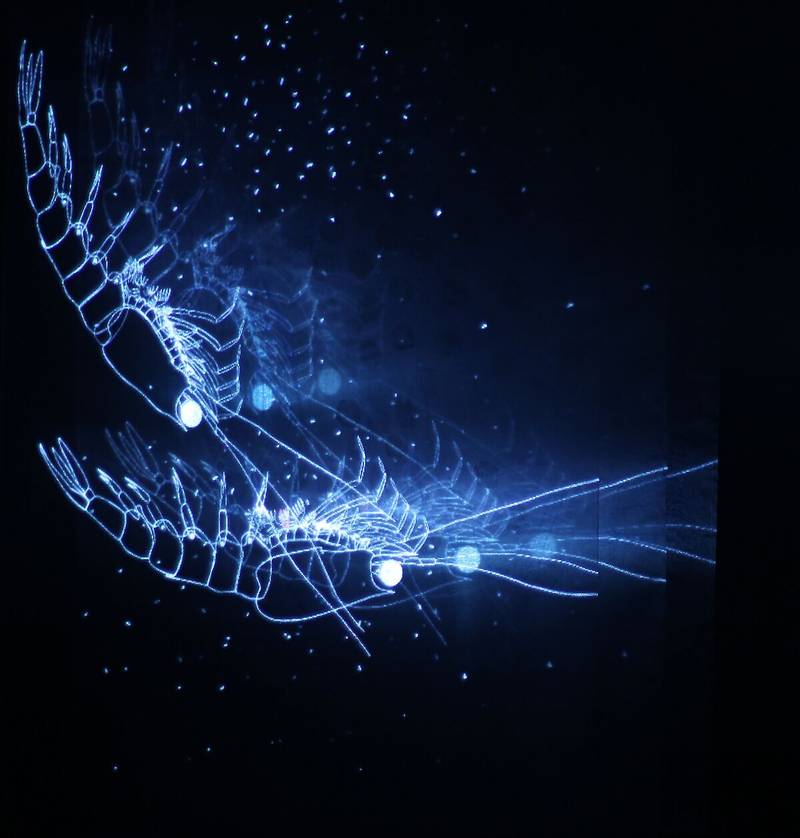Chase, probe, embrace, flex, push. It’s probably too much information, but that is how krill mate.
The behavior was recorded on a deepsea camera 500 meters below the surface of the Southern Ocean back in 2011 by Australian Antarctic Division researchers – who then made an animated illustration of this special “dance.”
Krill can change from adults to juveniles, and they can survive over 200 days of starvation, reducing their size by using their own body proteins rather than molting their exoskeleton.
They are known for being an important food source for whales, seals and penguins and for helping to sequester carbon deep in oceanic waters as their exoskeletons and poo sink to the seafloor.
They are at risk from over-fishing, climate change and ocean acidification, and a new project to monitor their population from space was announced this week by researchers from University of Strathclyde, WWF and the British Antarctic Survey.
The ability to do this was recently facilitated by the identification of the signal associated with the pigment that turns the krill red.
It’s estimated that there could be up to 500 million tons of krill swimming (and mating) in the Southern Ocean. That’s about the same biomass as all the cattle or all the humans on Earth.
Therefore, their potential to sequester carbon is substantial, but not as substantial as previously thought after a study released last month indicated that a greater percentage of their poo might degrade before reaching the seabed.
The researchers from the Australian Antarctic Division used a seafloor lander to monitor the daily migration patterns of the krill using a video camera and an upward-looking echo sounder. They found that krill’s vertical migration is more pronounced in winter when there is less carbon to export. They also found that no more than 25% of the krill population migrated over the year, and numbers varied seasonally.
This, they say, means that the efficiency of carbon export could be over-estimated by around 200%. Although, the researchers do admit that other factors such as molting and mortality means that more observations and year-round ecological and biogeochemical studies are needed to understand the situation better.
This week, Marine Technology News reported on a development designed to aid in long-term subsea scientific research. SubC Imaging announced its enhanced autonomous timelapse camera system which also features a hibernation mode that conserves battery power, enabling months or even years of continuous operation.
The camera system can integrate with setups like drop frames, landers, baited remote underwater video systems and AUVs, making it suitable for discovering more of nature’s subsea ecology and perhaps more of its “dances.”

